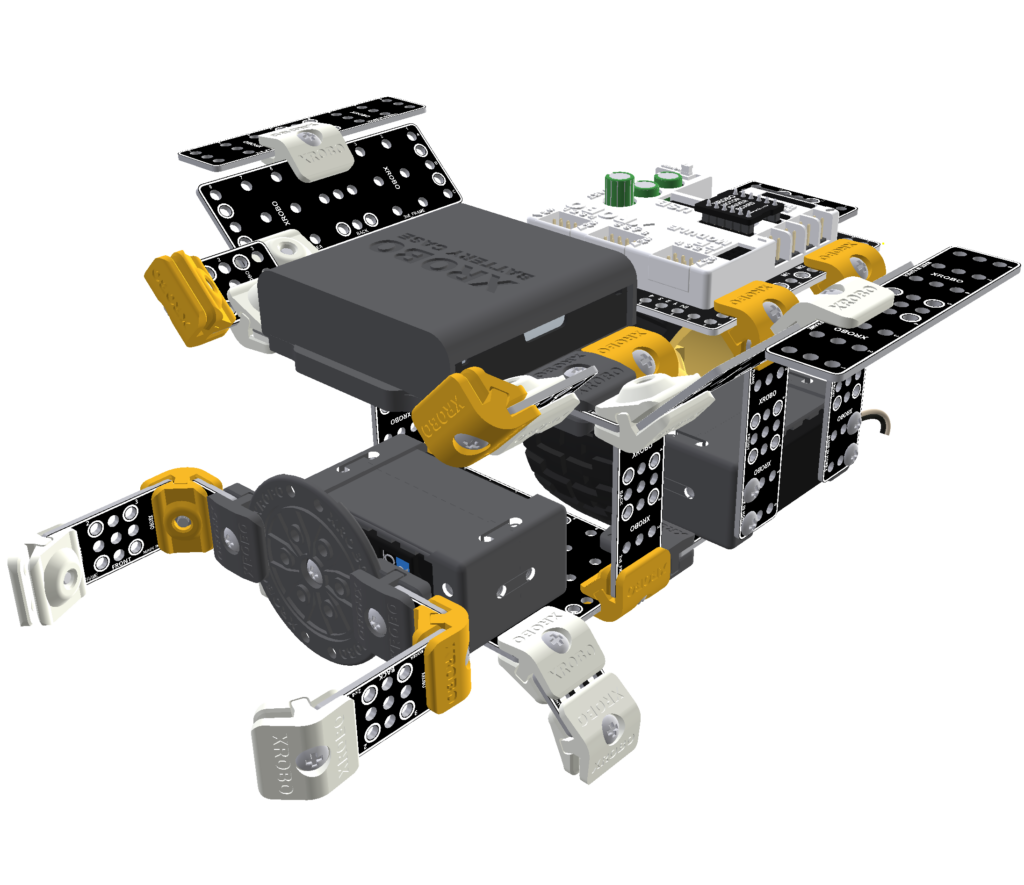
1. Robot Assembly
1) Assembling the Robot
- Please refer to the manual for assembling the robot.
- Ensure all components are properly connected.
2) Verifying Cable Connections
-
The front DC Motor with the left wheel
→ Connect to the M1 port on the CPU board. -
The rare DC Motor with the right wheel
→ Connect to the M2 port on the CPU board.
2. Code Upload & Robot Operation
1) If You Are Not Coding
- ① Turn on the power to the CPU board.
- ② Press and hold the START button for more than 2 seconds. Release it when you hear the "Do Re Mi Fa Sol La Ti Do" melody.
- ③ Press the START button 6 times to select the "La" tone.
2) If You Are Coding the Program Yourself
① Preparing for Upload
- Ensure mBlock is installed on your computer. If not, please install mBlock.
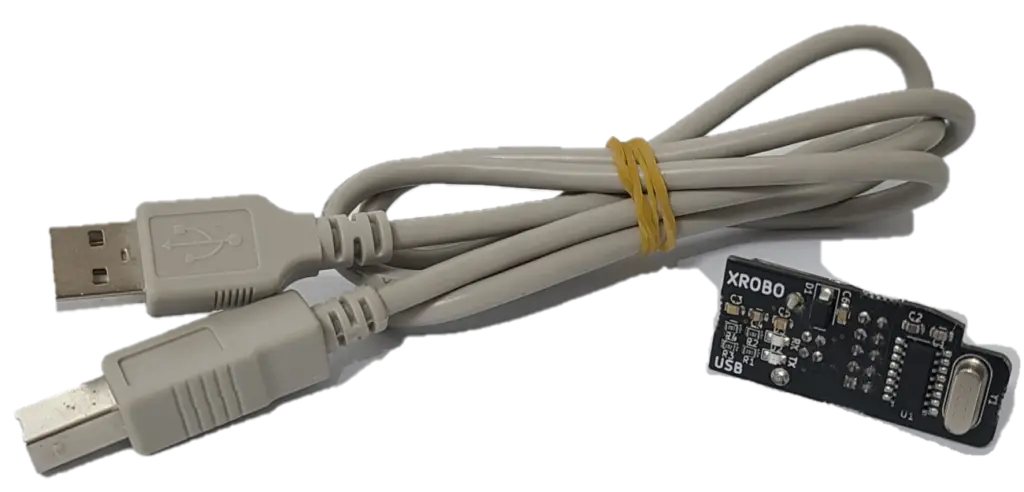
- To operate the robot, you will need a download board and a download cable. If you do not have these components, please purchase them.
② Coding the Program
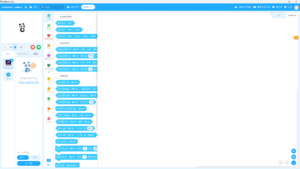
- Launch mBlock and freely code your program by referring to the coding examples or the manual.
③ Uploading the Code
- Upload the code to the robot by following the instructions on the upload method page or video (starting at 34 seconds).
④ Operating the Robot
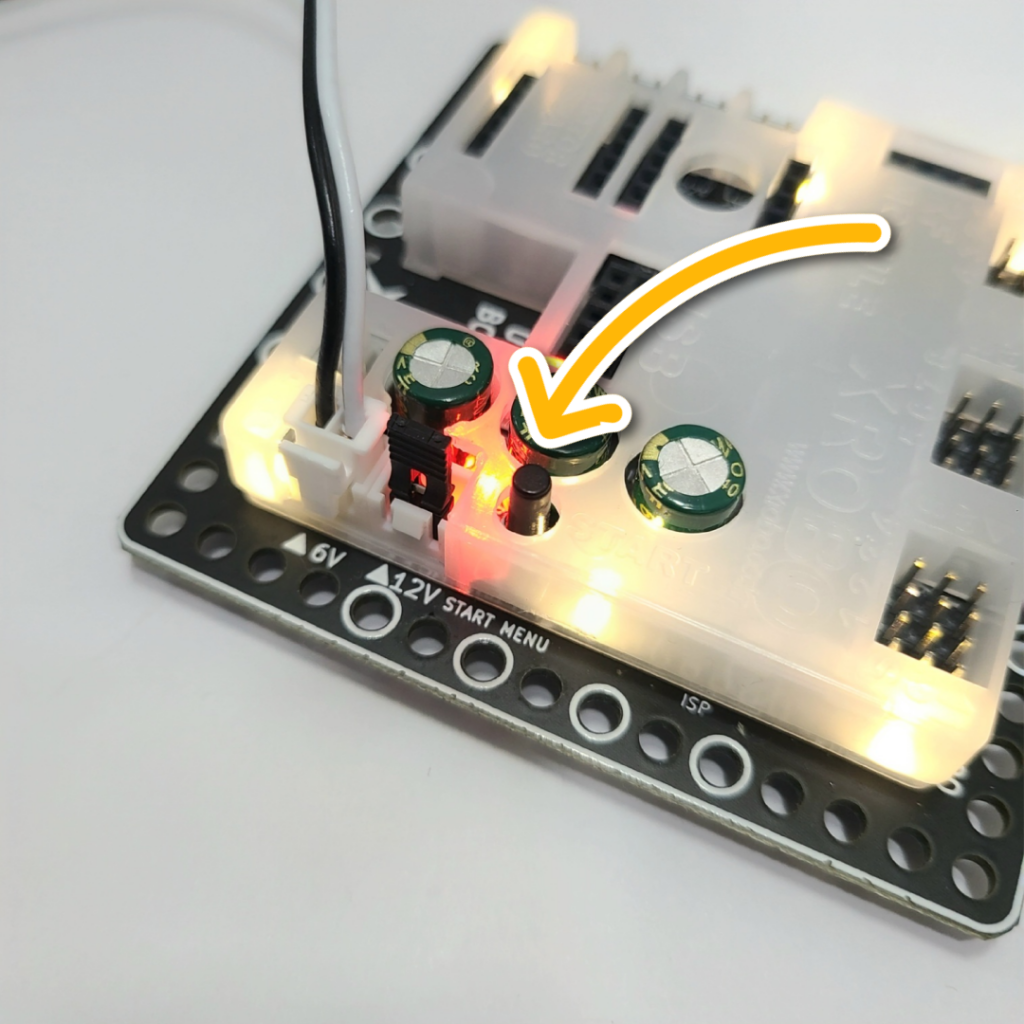
- ① Turn on the power to the CPU board.
- ② Briefly press the START button on the CPU board and then release it.
- ③ Turn on the power to the remote control and have fun controlling the robot.
3. Coding Examples
1) Rotating the Robot Propeller
Counterclockwise Rotation
Let’s spin the propeller at a speed of 10 for 1 second.

Since the front DC motor with the propeller is connected to the M1 port, set the speed of ‘M1′ to ’10’.
Clockwise Rotation
Let’s spin the propeller at a speed of -10 for 1 second.

If the speed value is prefixed with a ‘-‘, the DC motor will rotate in the opposite direction.
2) Moving the Robot Forwards and Backwards
Move Backward
Let’s rotate the wheels at a speed of 20 for 1 second.

Since the rear DC motor with the rear wheels is connected to the M2 port, set the speed of ‘M2′ to ’20’.
Move Forward
Let’s rotate the wheels at a speed of -20 for 1 second.

If the speed value is prefixed with a ‘-‘, the DC motor will rotate in the opposite direction.
3) Making the Robot Swim
Move in the Following Sequence
- Move Forward
- Move Backward
- Move Forward
- Move Backward
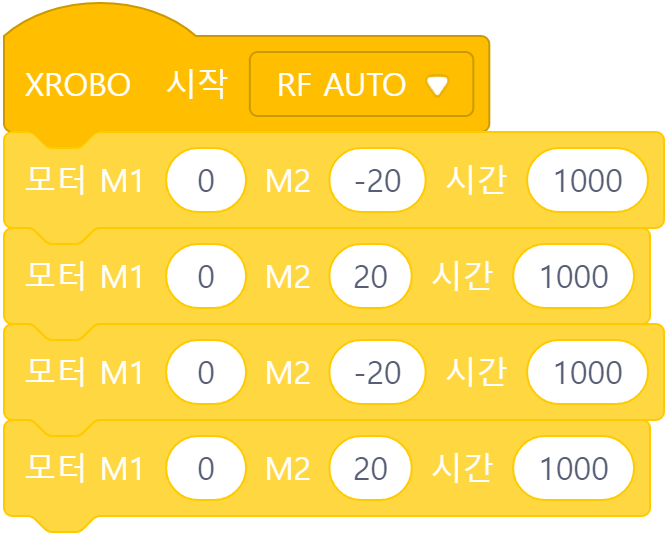
Move in the Following Sequence
- Move Forward
- Rotate the Propeller Clockwise
- Rotate the Propeller Counterclockwise
- Move Backward
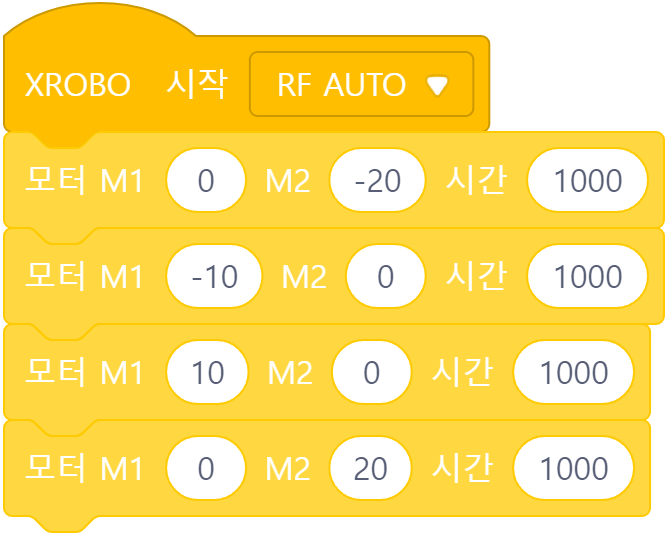
4. Troubleshooting Robot Issues
1) When the Power Does Not Turn On
- Ensure the batteries are inserted with the correct polarity, matching the ‘+’ and ‘-‘ signs.
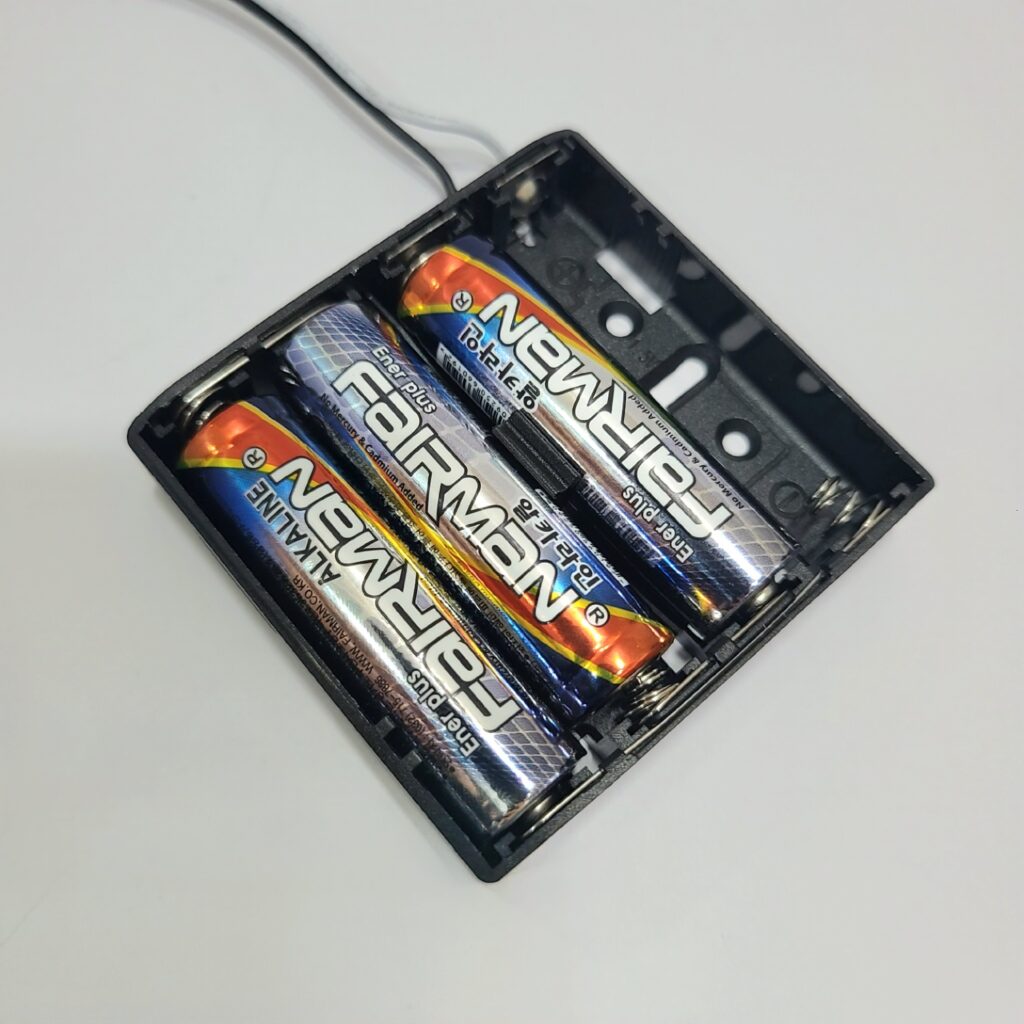
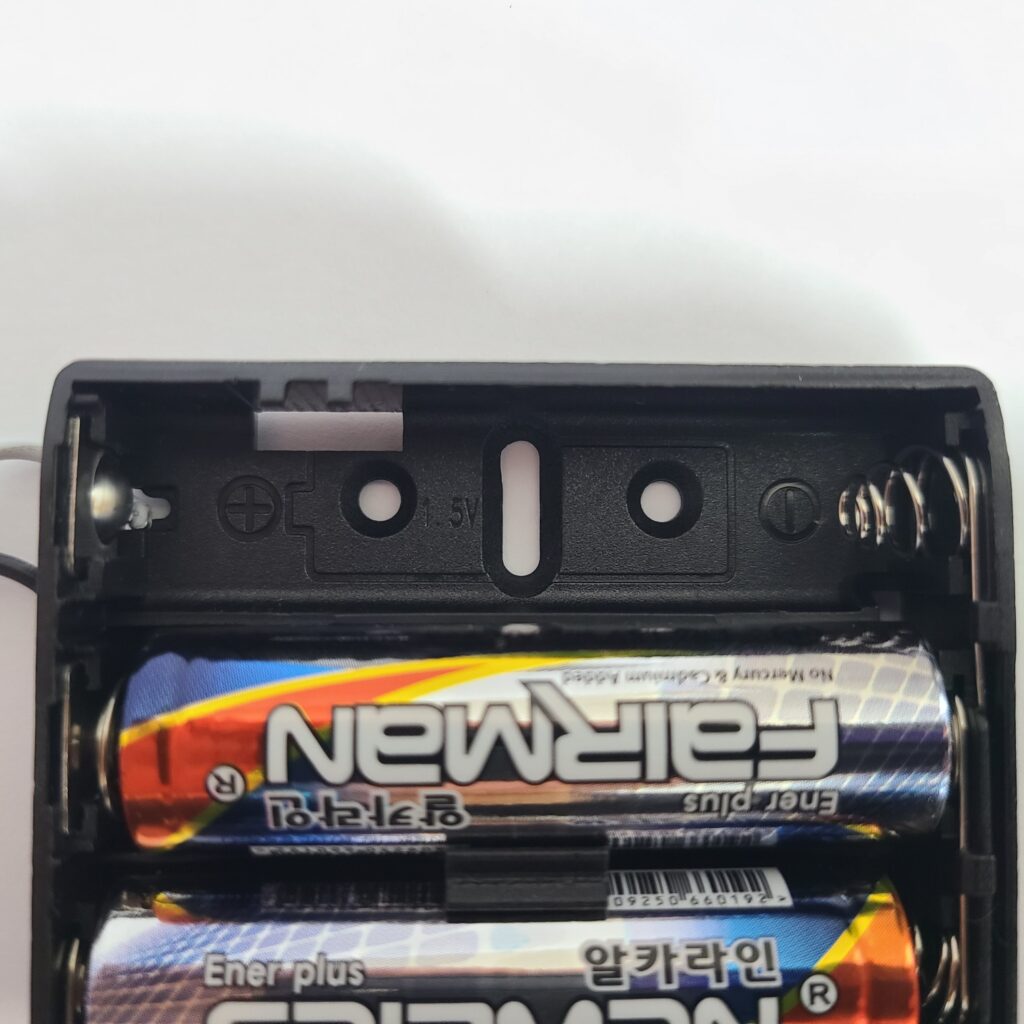
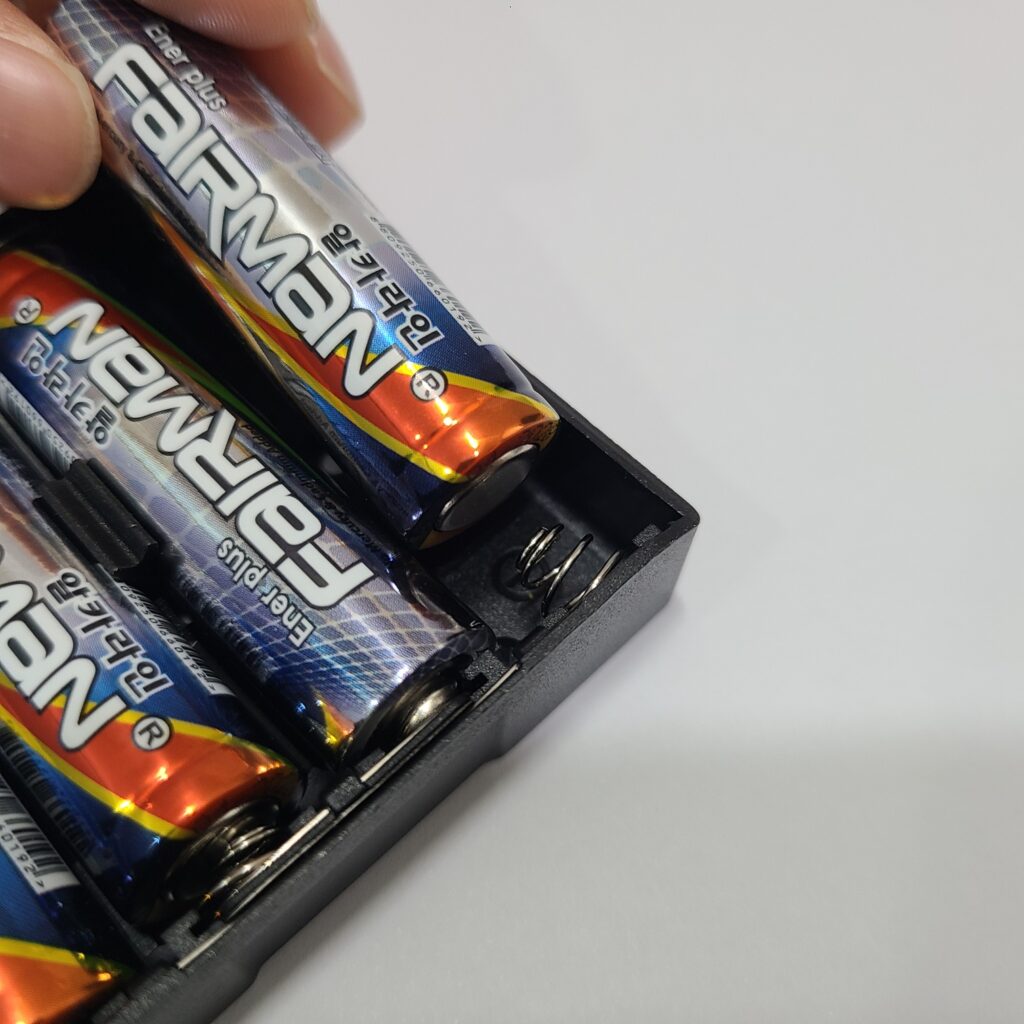
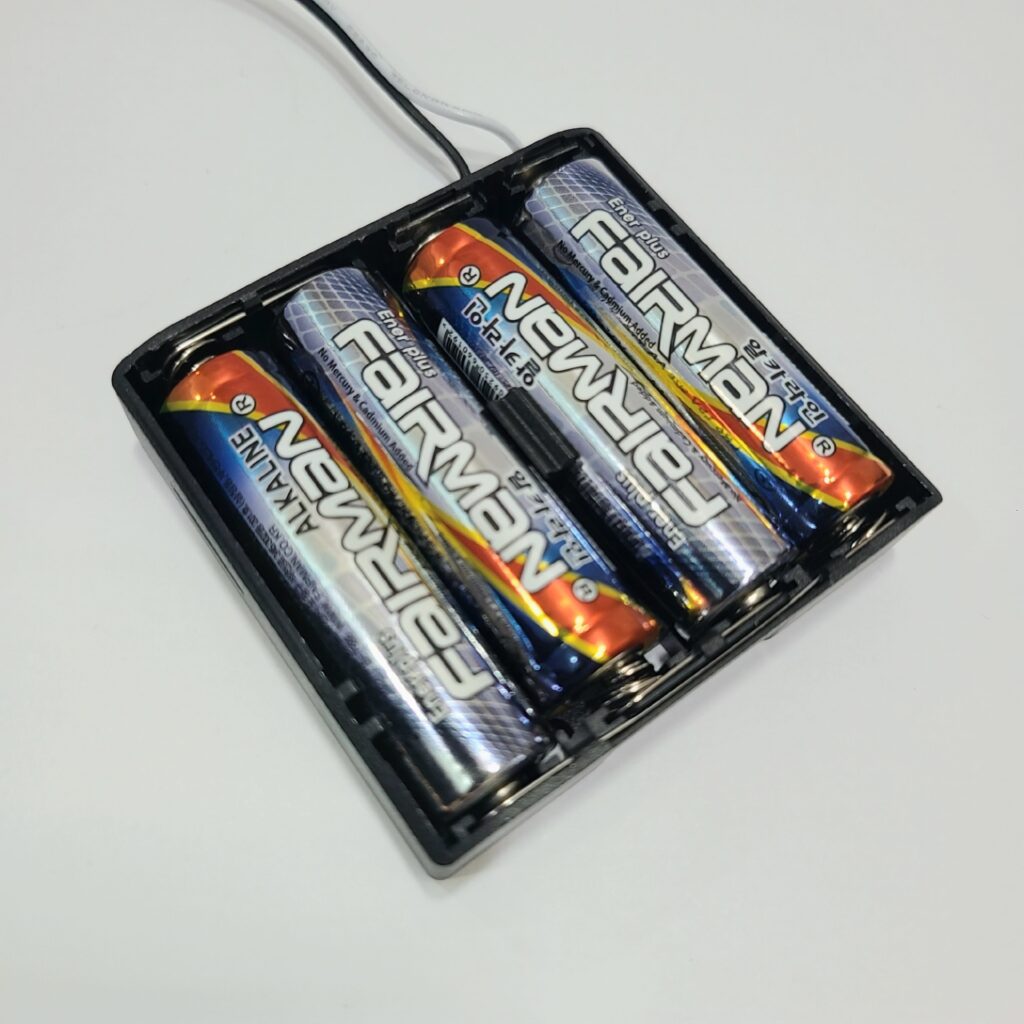
- Verify that the jumper cap is properly inserted into the 12V power connector on the CPU board.
- If there is no jumper cap available, use a 3×8 bolt to connect to the 12V power connector as an alternative.
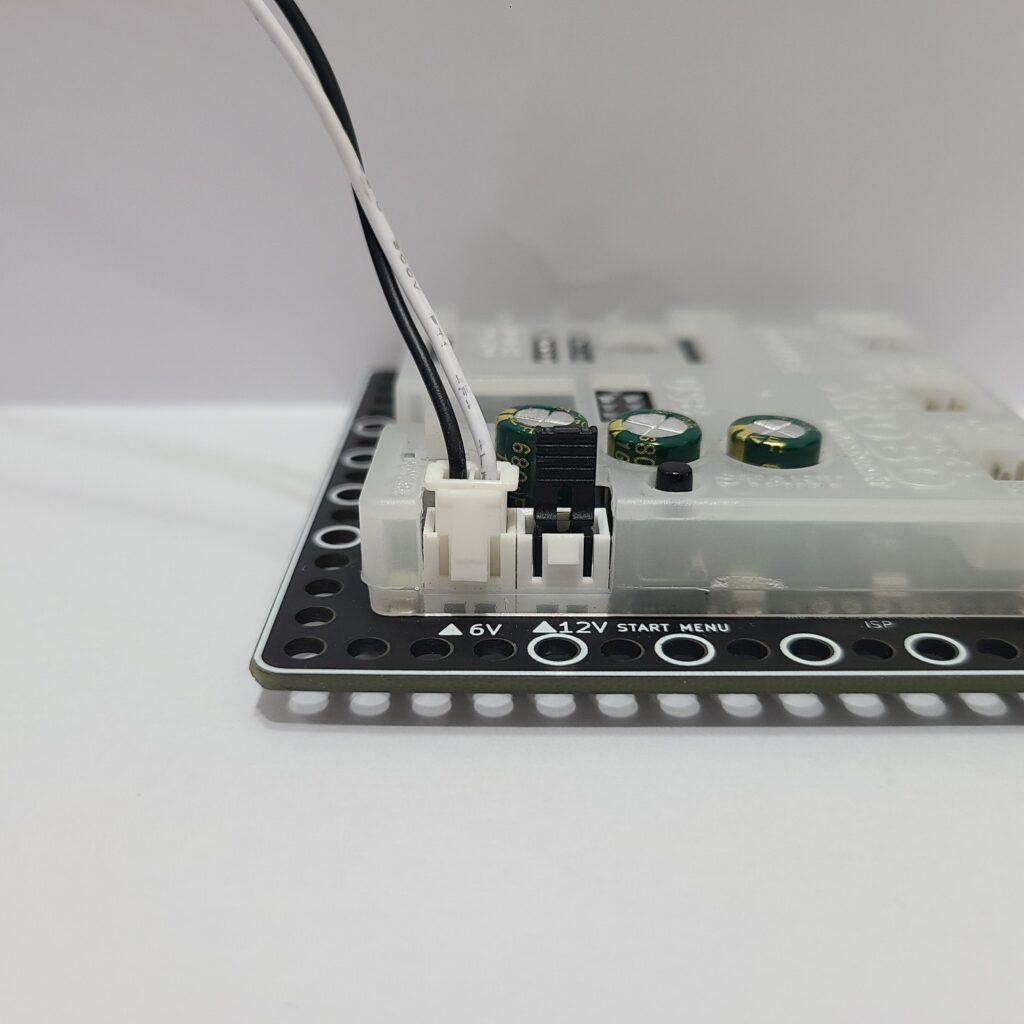
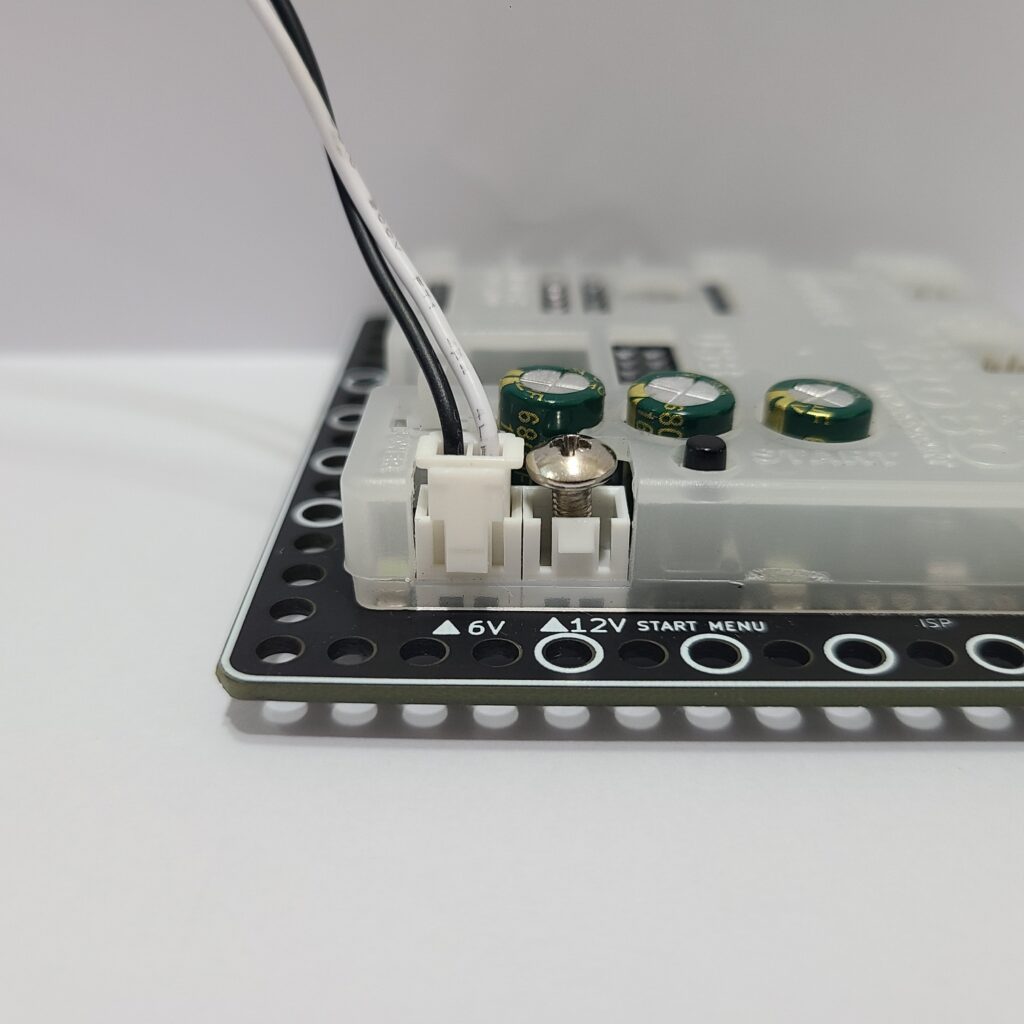
- Inspect the battery pack cable for any breaks or disconnections.
- Ensure that the battery pack cable is securely connected to the 6V power connector on the CPU board.
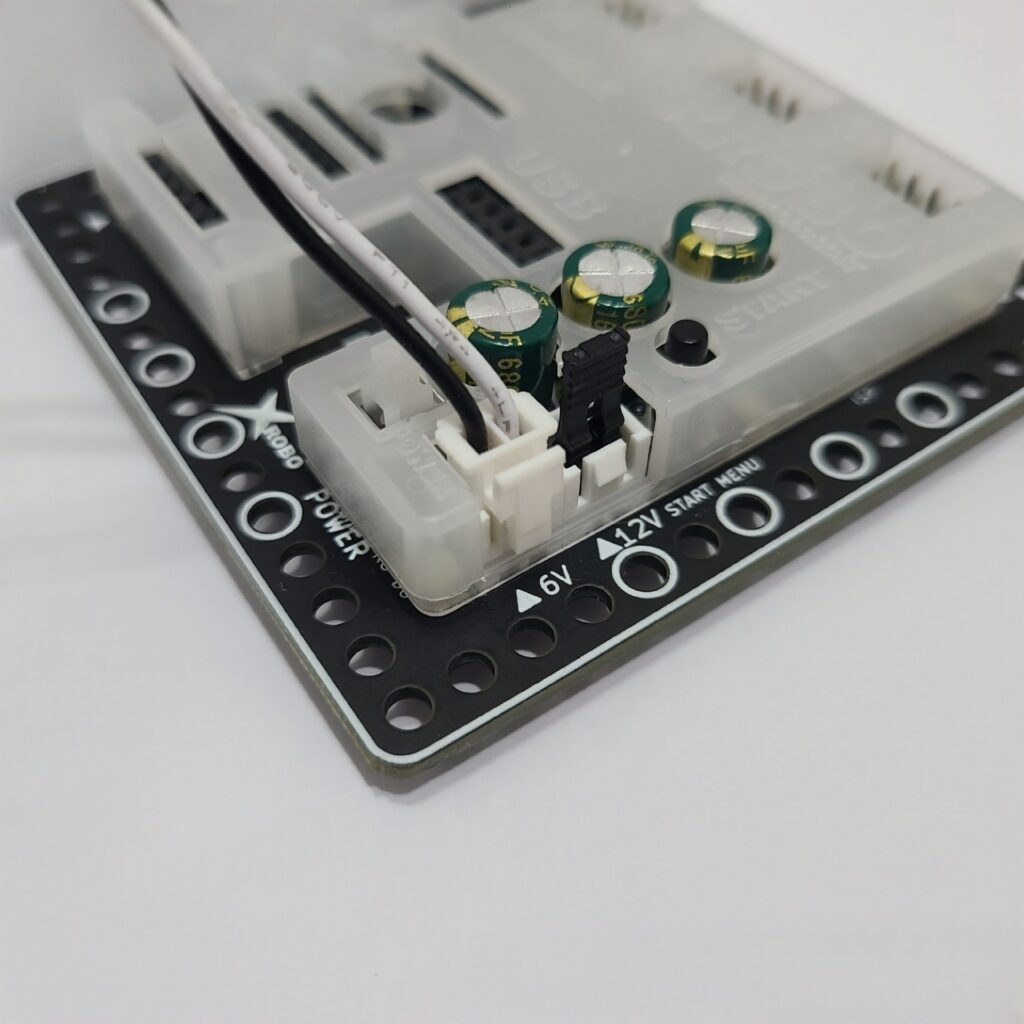
2) When the DC Motor Does Not Rotate / Rotates in the Wrong Direction
- Ensure that the motor cables are correctly connected to the motor port.
- Check the motor cables for any signs of disconnection or damage.
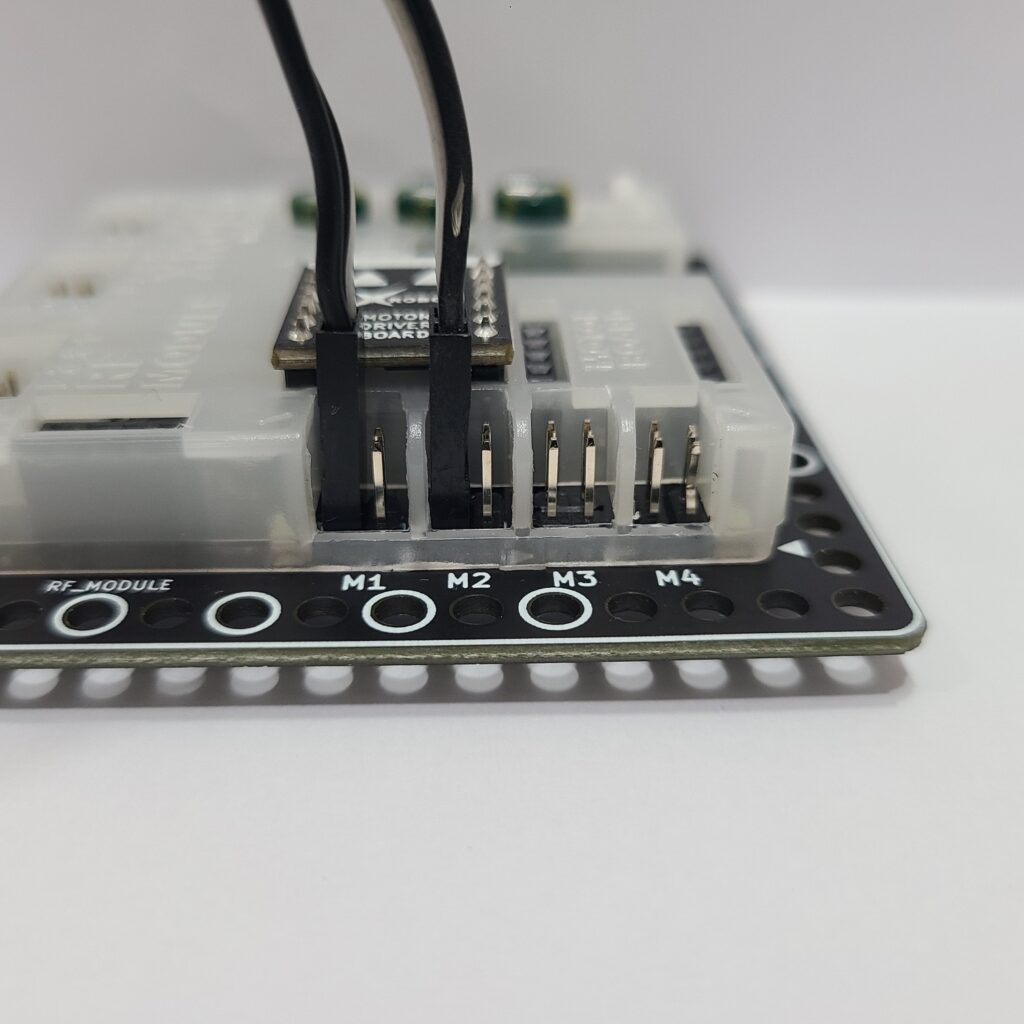
- Confirm that the motor cables are inserted vertically into the motor ports on the CPU board. If connected horizontally, the motor may not rotate.
- Ensure the black wire of the motor cable is aligned with the arrow on the CPU board case. If connected in reverse, the DC motor will rotate in the opposite direction.
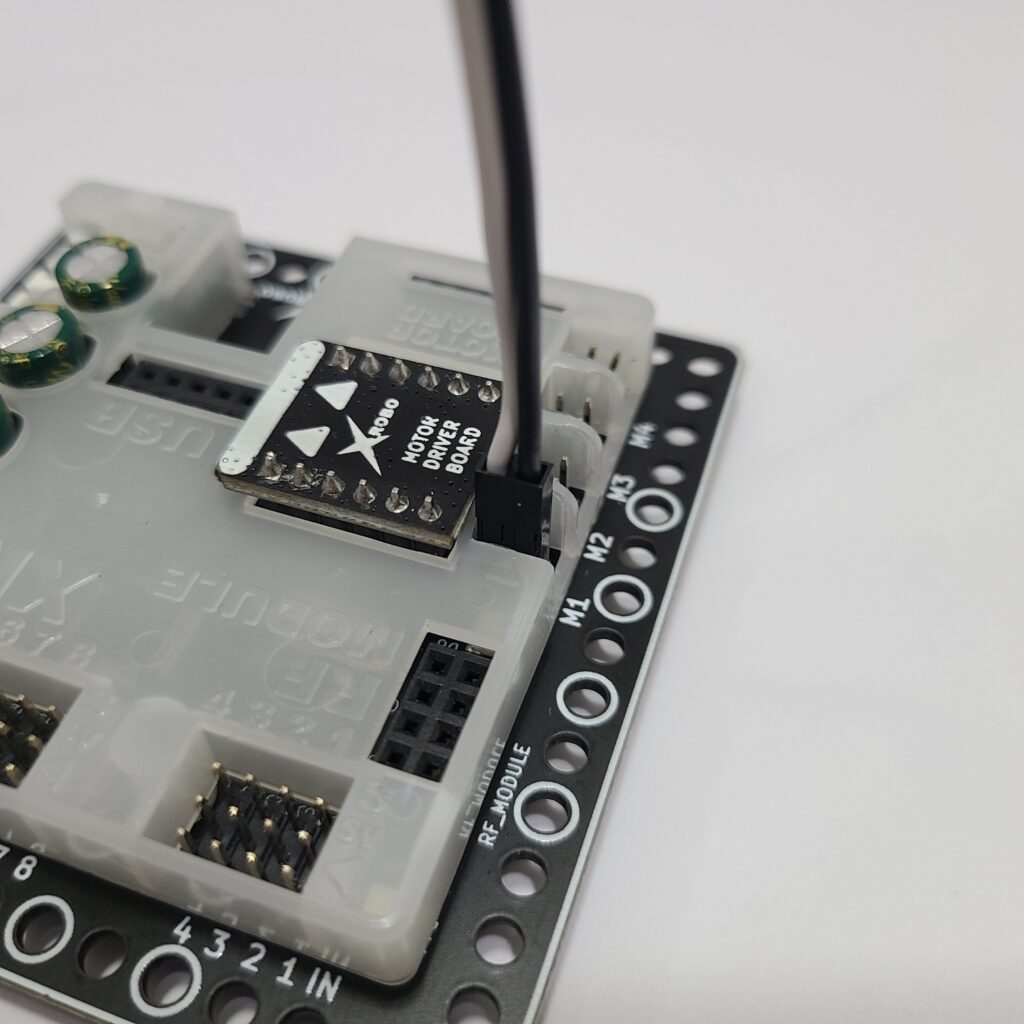
- If the DC motor driver board is not inserted according to the assembly diagram, do not turn on the power. Insert it correctly as per the assembly diagram to avoid overheating risks during operation.
- If the DC motor driver board is not inserted, place it properly and then turn on the power to check the operation.
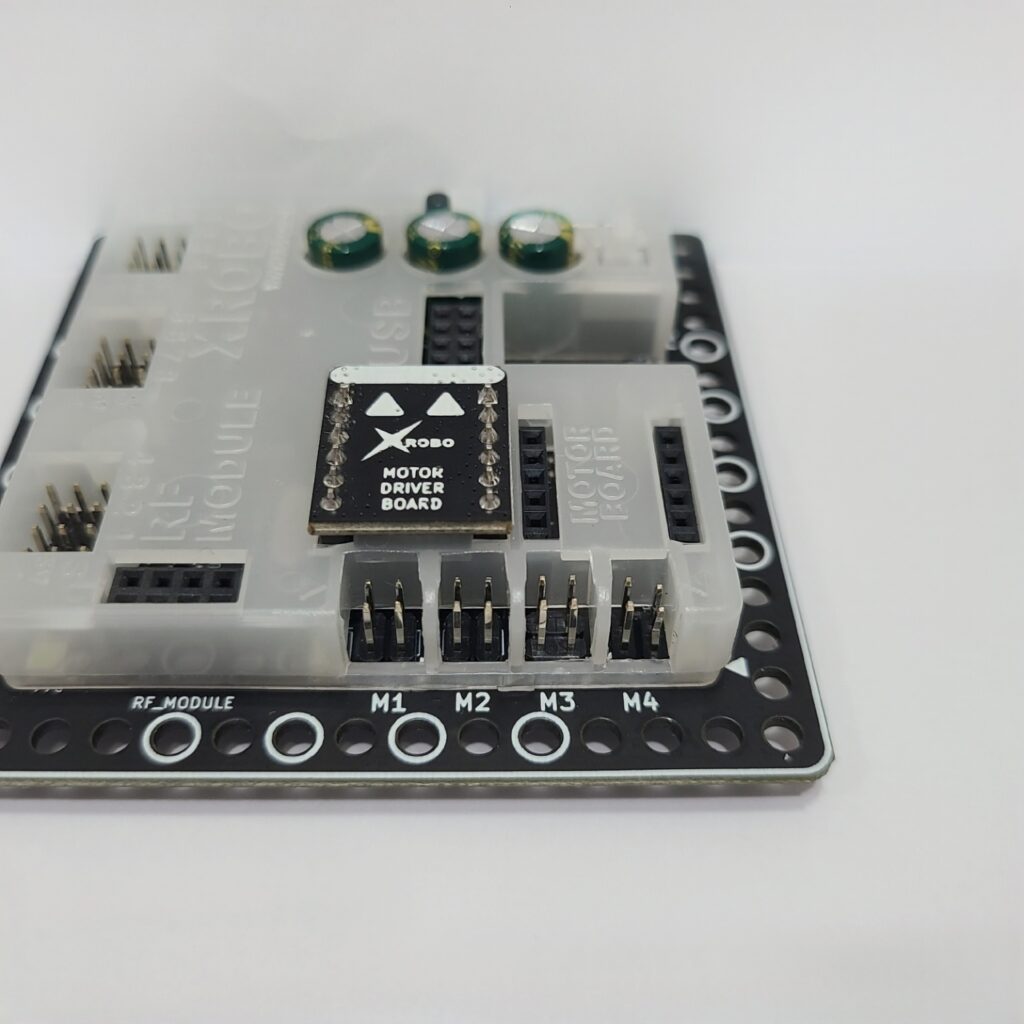
3) When the Robot Operates Abnormally
- Ensure that the front DC motor shaft is facing the right, and the rear DC motor shaft is facing the back. If the rear DC motor shaft is assembled incorrectly, the wheels may catch on the frame, preventing the robot from operating properly.
- Check that the cables are not caught in the drivetrain. If the cables are entangled with the drivetrain, the robot may not function properly.
- Ensure that the propeller at the front of the Water Strider is properly contacting the ground. Often, a 2x4F (correct) is needed, but a 2x3F (incorrect) is assembled instead, or the 135A piece is not assembled at the end of the frame.
